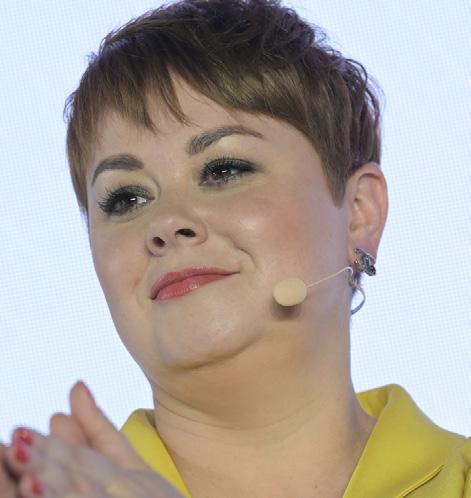
1 minute read
Goodbye monoculture, hello to marginal niche subcultures
“WE KEEP hearing this phrase that popular culture is dead,” said David Tiltman, senior vice-president of content at WARC at a Creative Impact session in the Palais II that served to dispel the myth.

Advertisement
“We still refer to brands as being in culture,” he said, describing how marketing evolved in the 20th century along with the rise of popular culture. But the more recent rise of niche subcultures and fragmentation of media had perhaps changed the meaning of culture, he added.
“How do legacy brands reach the margins and the subcultures,” asked Lena Roland, head of content, WARC Strategy. “Is mass marketing even achieva - ble, or is the future niche?”

Answering that question was Marcus Collins, head of strategy, Wieden+Kennedy, and professor of marketing at the University of Michigan. In trying to define culture, the marketing expert said the concept was ultimately an expression of “who we are,” a set of “ideologies and beliefs” that also feeds into shared expression of culture through art and literature. Using the example of a bell curve, brands need to connect with the culture at the point where it is normalised, he said. But they must increasingly look to the fragmented subculture at the fringes before it moves into the mainstream.
He noted that, 20 years ago, comic books weren’t cool but are now the subject of endless blockbuster franchises. Brands of the future need to feed off more tribal cultural identities, he concluded, answering “of course not” to the question of whether popular culture is dead.

Ellie Bamford, chief strategy officer at Wunderman Thompson, agreed that popular culture is alive and well but is less driven by monoculture. She referred to “a kindred cultural spirit with friends” made possible via a streaming revolution leveraged by increased access to media playing devices — in America alone, 19.4 million years of content were streamed in 2022. While the World Cup and Eurovision are examples of universal culture driving brands, most is increasingly driven at the margins of culture defined as “moments” that hit like meteorites and fizzle out.
“Brand opportunities emerge out of this rubble,” she said, adding that “small is big” and marketers must take “a unique stance.”










